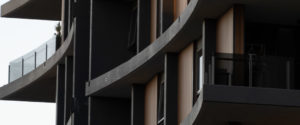As mentioned in a previous blog article, there are numerous and significant changes to the way that Section J (Deemed to Satisfy) assessments are to be carried out under NCC 2019, Vol 1. These changes take mandatory effect on 1st of May, 2020.
So what are the main changes with Section J, NCC 2019, Vol 1?
1. Roof and Ceiling Construction (J1.3)
-
Total R-Value required for some zones has increased.
-
Solar absorptance of roofs in all climate zones (except Alpine Zone 8) cannot exceed 0.45. Expect to see a lot of Surfmist, Classic Cream, and Shale Grey roofs in commercial buildings.
-
There is no longer a mandated formula for calculating compensation in above-ceiling insulation for breaks due to recessed lighting, however, this still needs to be accommodated in our calculations.
2. Roof Lights (J1.4)
Provisions have been simplified and tightened, and no longer have the allowance for lower energy efficiency requirements if roof lights are required for compliance with Part F4 (Light and Ventilation).
3. Walls and Glazing (J1.5)
There have been extensive, technical changes to the Walls and Glazing element, and these will be discussed in a future blog article, to be published shortly.
4. Floors (J1.6)
Floors must now achieve R 2.0 in all Climate Zones – with the exception of Climate Zone 8, which is required to achieve R 3.0. Values are higher for floors with an in-slab heating or cooling system. Previously there was no requirement for slab on ground floors to achieve a certain R-Value. The calculation takes the following into account:
-
The ratio of floor area to perimeter
-
External wall thickness
Above ground floors to non-conditioned zones will need to have insulation added (as previously), but now some slabs on ground will also require insulation.
5. Building Sealing (J3)
Minimal changes only (e.g. allowing rapid roller doors to the list of allowable entrances to conditioned space greater than 50m2).
6. Air-conditioning and ventilation systems (Part J5)
There are significant changes in this Part. It simplifies the requirements for packaged air-conditioner systems. They are compliant if they comply with MEPS, and if they have a capacity greater than 65kWr, then there are minimum Energy Efficiency Ratios that they need to comply with for heating and cooling.
7. Lighting and Power (Part J6, J7 and J8)
The main change is that the maximum illumination power density allowed has decreased for all spaces. It was almost impossible not to pass this section under NCC 2016, but now there may be a be a bit of back and forth to ensure the designed lighting plan achieves compliance. There are a few more situations where daylight sensors are required. There is also the requirement to ensure lifts and escalators switch to idle, there is more detail for pool and spa heating, and changes to facilities for energy monitoring requiring more time-of-use monitoring.
Understanding the changes to the legislation require a lot of detailed reading, and changes in assessment methods used by Energy Assesors. BERA is across all of these changes. We are ready to help our new and existing clients ensure that their commerical builds are fully compliant with the new legislation, and ready to find solutions to design and construction challenges resulting from the new legislation.

